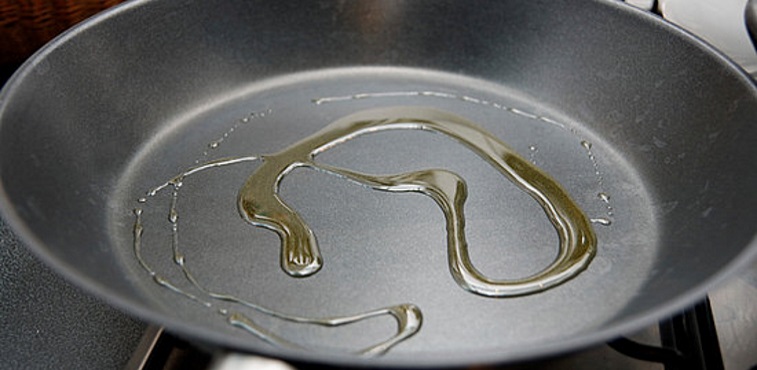Why we shouldn’t use olive oil for cooking

The more saturated a fat, the less likely it is to get rancid when it’s used for cooking. The term rancid refers to the chemical break of a fat, due to its oxidation. Ingesting these fats (once they’re rancid) increases the likelihood of cardiac diseases and atherosclerosis. To avoid eating rancid fats we should cook with oils higher in saturated fat.
The problem is, contrary to what most people think, extra virgin olive oil can’t stand very high temperatures (only up to 320º F), so, it isn’t good for cooking at high temperatures. So, despite thinking olive oil is a good option for cooking, there are other oils that can withstand much higher
In order for us to make a good choice for a cooking oil, the table below shows the percentage of saturated, monounsaturated and polyunsaturated fats in various types of oils. For example, coconut oil would be a good choice for cooking, since it’s 91% saturated fat, as a pose to safflower oil which has only 75% saturated fat.
SEE ALSO: MYTH-HYPERTROPHY TRAINING DOESN’T BURN FAT!
We shouldn’t let oils reach their boiling pont while we cook. The boiling point is when an oil reaches a temperature where it starts to break very rapidly. This way, the oil can become darker, thicker or even gain a bad smell. Obviously it’s best if we choose a cooking oil with a higher boiling point.
| Oil | % monounsaturated fat | % polyunsaturated fat | % saturated fat | boiling point (ºF) |
| Avocado Oil | 70 | 10 | 20 | 520 |
| Almond Oil | 78 | 17 | 5 | 420 |
| Canola Oil | 54 | 37 | 7 | 400 |
| Coconut Oil | 7 | 2 | 91 | 350 |
| Flaxseed Oil | 19 | 72 | 9 | 225 |
| Grapeseed Oil | 17 | 71 | 12 | 400 |
| Macadamia Nut Oil | 85 | 6 | 9 | 410 |
| Peanut Oil | 47 | 29 | 18 | 320 |
| Hemp Seed Oil | 12 | 80 | 8 | 330 |
| Palm Oil | 40 | 10 | 50 | 450 |
| Rice Bran Oil | 48 | 35 | 17 | 490 |
| Safflower Oil | 13 | 75 | 12 | 225 |
| Sesame Oi | 42 | 45 | 17 | 350 |
| Sunflower Seed Oil | 23 | 65 | 12 | 225 |
| Nut Oil | 25 | 56 | 18 | 320 |

